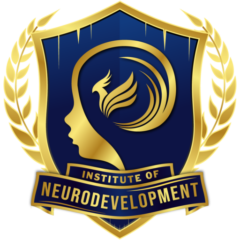Electroencephalography (EEG) is a test that measures the electrical activity of the brain using a small metal disk (electrode) attached to the scalp. Brain cells communicate via electrical impulses and are always active during sleep. This activity appears as a wavy line in the EEG recording.
EEG is useful for, but not limited to, the following diagnoses and treatments:
- Brain tumor
- Brain injury due to head injury
- Brain dysfunction (encephalopathy) with various possible causes
- Sleeping disorder
- Inflammation of the brain (herpes encephalitis)
- stroke
- Creutzfeldt-Jakob disease
- Medically Induced Coma
- Intermittent Explosive Disorder
- Epilepsy
- Seizures
- Functional Neurologic Disorder
- Chronic daily Headaches
- Dementia
- Myoclonus
- Rett Syndrome
- Long QT syndrome
- Tuberous Sclerosis

EEG can also be used to identify brain death in a comatose person. Continuous EEG is used to find the appropriate level of anesthesia for a person with a medically induced coma.
EEG risk
EEG is safe. If you have a medical condition, consult your doctor before the test. If you have a seizure disorder, there is a small risk that the flashing lights of the EEG and deep breathing can cause seizures. It’s rare. In this case, a medical team is available to treat you immediately.
In other cases, the doctor may induce seizures and obtain measurements during the test. Medical staff will be on site to closely monitor the situation.

Preparation
- Do not eat or drink anything with caffeine for 8 hours before the exam.
- If you are told to sleep during a brain wave, your doctor can give you instructions on how much sleep you should have.
- Usually eat the night before and on the day of surgery.
- Hypoglycemia can mean abnormal consequences.
- Tell your doctor about all prescription and over-the-counter medications and the dietary supplements you are taking.
- Wash your hair the night before the test.
- After that, do not use any conditioning or styling products left on your hair.
- If you have extensions that use glue, you need to remove them.
EEG procedure
- You lie down on the examination table or bed and a technician puts about 20 small sensors on the scalp.
- These sensors, called electrodes, pick up electrical activity from cells in the brain called neurons and send it to the machine.
- It appears as a series of lines that are plotted on paper or displayed on a computer screen.
- When the recording starts, you will be asked to rest.
- First open your eyes and relax, then close your eyes and relax.
- The technician may ask you to breathe deeply and quickly or stare at the flashing light. Both can change the pattern of brain waves.
- The machine only records the activity of the brain; it does not stimulate it. Seizures rarely occur during the test.
- You can do brain waves at night while you sleep. If other physical functions such as breathing and pulse are also recorded, this is called a polysomnography.
- In some cases, you may send the data directly to your doctor’s office or return home with an EEG machine to record for later analysis.
EEG results
Once the brainwave results are analysed, they are sent to your doctor to review them with you. The EEG looks like a series of wavy lines. Lines look different depending on whether you are awake or asleep during the test, but there is a normal pattern of brain activity in each state. If the normal pattern of brain waves is disturbed, it may be a sign of epilepsy or another brain disorder. Abnormal brain waves alone do not mean that you are suffering from epilepsy. The test only records what is happening in your brain at that moment. Your doctor will do other tests to confirm your diagnosis.
